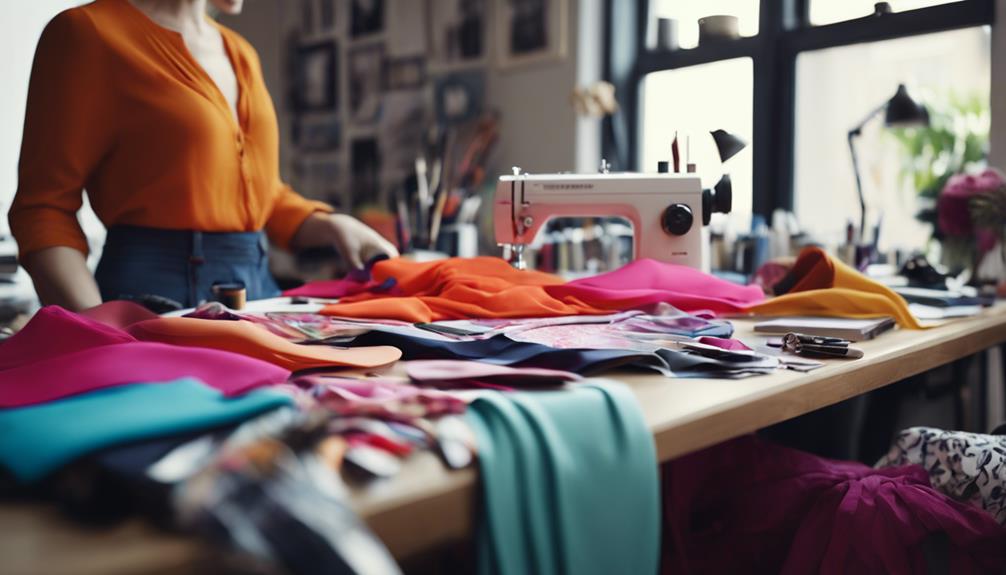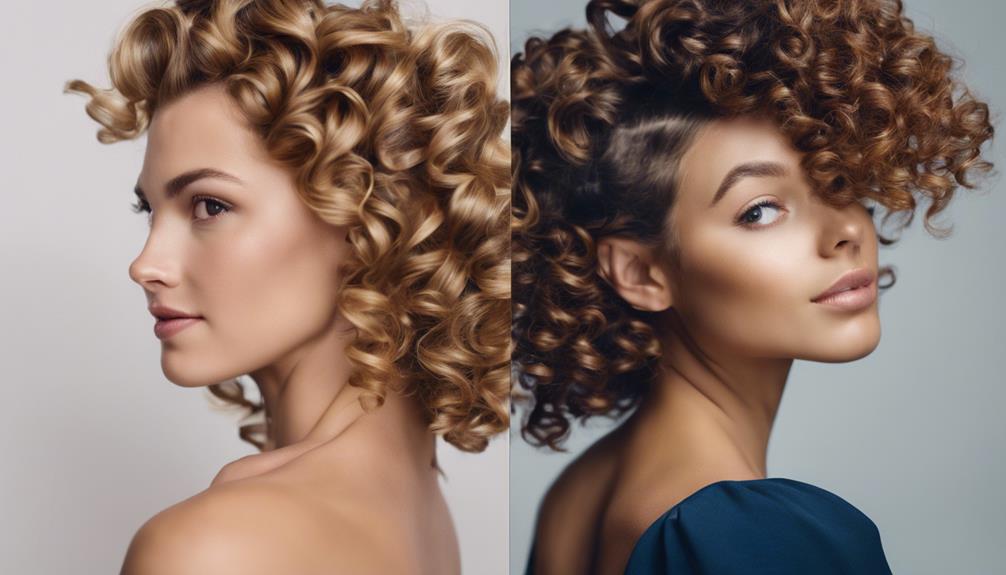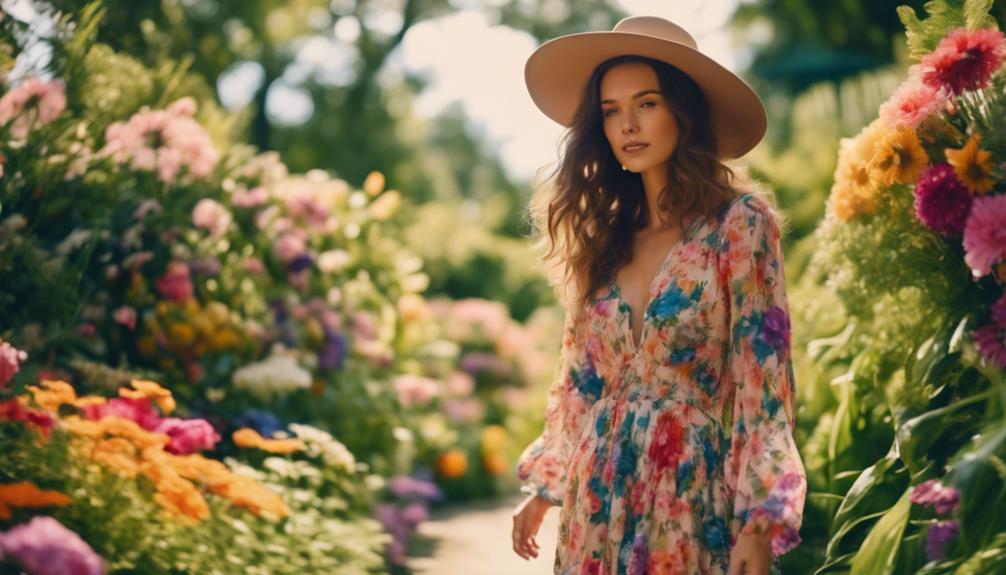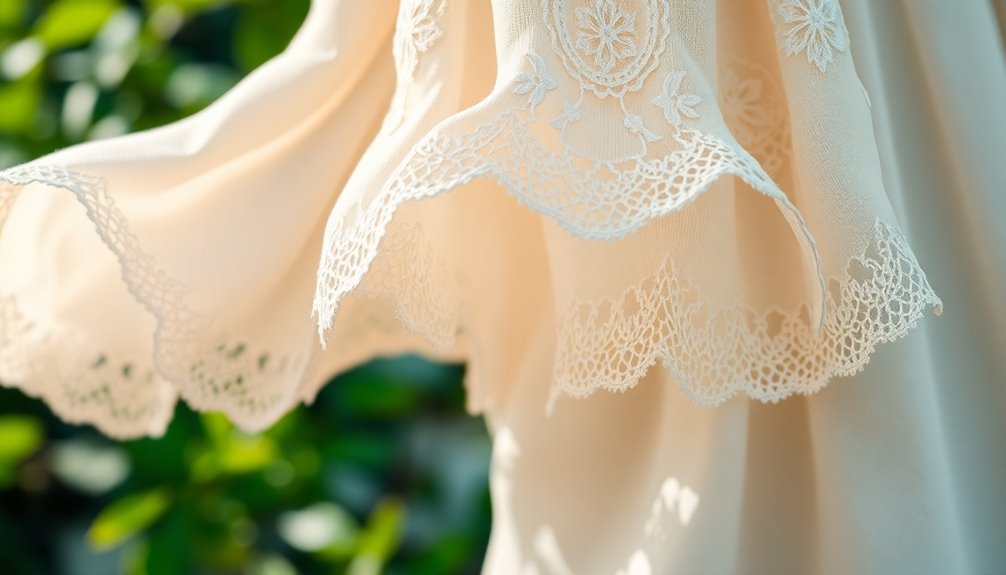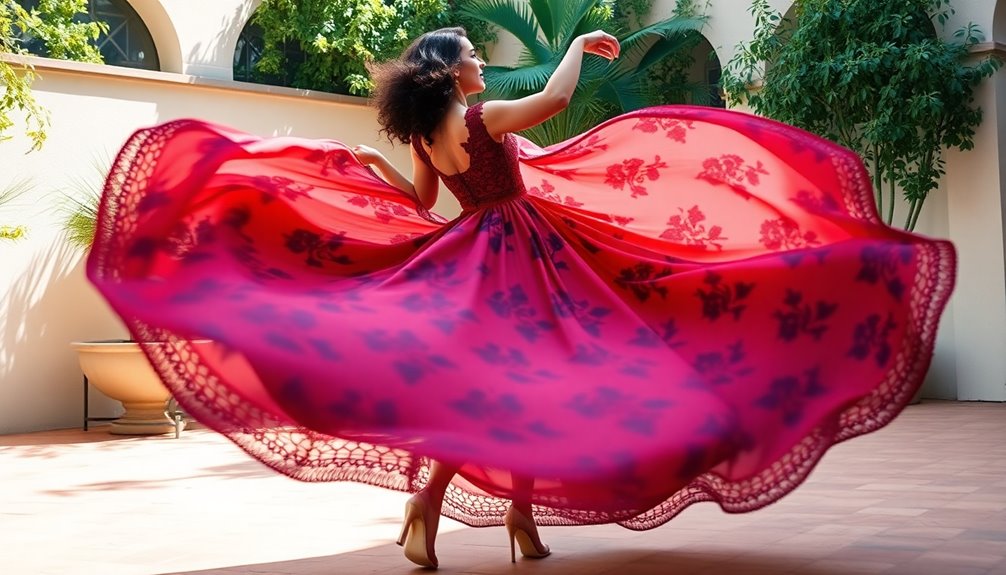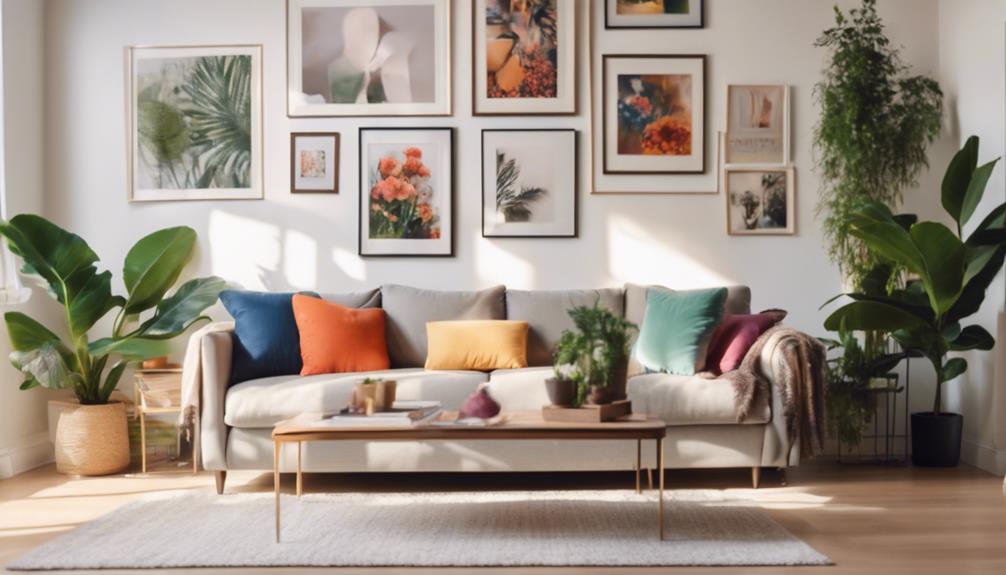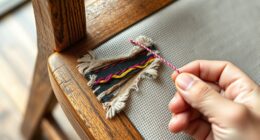If you're torn between fashion styling and fashion design, you should know they offer unique paths. Fashion design focuses on creating original garments, blending art with technical skills. It requires an understanding of trends and consumer preferences. On the other hand, fashion styling is all about curating outfits that mirror personal style. Stylists excel in organization and storytelling through fashion. Both roles thrive on creativity but require different skill sets. Whether you enjoy crafting designs or showcasing them, there's a path for you. Stick around to uncover more about what each career entails and how to choose the best fit for you! If you have a passion for creating new looks and experimenting with different garments, fashion design may be the path for you. However, if you love the challenge of putting together polished and cohesive outfits, fashion styling could be your calling. Each career offers a unique way to express creativity and make an impact in the fashion industry. It’s important to consider your strengths and interests when deciding between design or styling.
Key Takeaways
- Fashion design involves creating unique garments, requiring strong artistic vision and technical skills, while styling curates outfits that reflect personal styles.
- Designers focus on fabric selection and garment construction, while stylists emphasize organization and presentation for specific occasions.
- Both careers thrive on creativity, but designers need drawing and sewing skills, whereas stylists require organizational skills and knowledge of body types.
- Collaboration between designers and stylists is essential for producing compelling looks, especially in fashion shows where both roles shine.
Understanding Fashion Design
Fashion design is all about creating unique garments from scratch, blending artistic vision with technical skills like sketching and sewing to bring innovative ideas to life. As a fashion designer, you'll need a solid understanding of fashion, which includes recognizing trends, consumer preferences, and the diverse styles that define the industry.
You'll plunge into various categories, from haute couture to ready-to-wear, each requiring distinct technical knowledge and creativity. Understanding different styles helps you craft collections that resonate with your audience. It's not just about creativity; effective designers balance artistry with market viability to guarantee their work appeals to consumers.
Collaboration is key in this field. You'll often work closely with manufacturers to oversee the production process, guaranteeing quality and craftsmanship in every piece you create. Your designs won't just be garments; they'll tell stories on runways and through visual presentations, showcasing your artistic vision and emotional connection to your creations.
Embracing this multifaceted approach will enhance your understanding of fashion design, setting you apart in a competitive industry.
Exploring Fashion Styling

Styling outfits for clients involves curating looks that reflect their personal style while considering the occasion. As a stylist, you'll immerse yourself in the world of fashion trends, tailoring each outfit to fit your client's unique identity. Your role requires a keen eye for detail, combining pieces from various collections to create cohesive and striking ensembles.
Here's a glimpse of what your styling process might look like:
| Aspect | Details |
|---|---|
| Client's Body Type | Understanding proportions and shapes |
| Occasion | Formal, casual, or themed events |
| Color Theory | Choosing colors that enhance personal style |
| Current Trends | Keeping up with the latest fashion trends |
| Visual Storytelling | Creating narratives through outfit choices |
With your organizational and communication skills, you'll educate clients on flattering silhouettes and cuts. Collaborating with designers allows you to blend various pieces seamlessly, showcasing your expertise in visual storytelling. Ultimately, being a stylist means transforming your clients' wardrobes into reflections of their true selves, making fashion an empowering experience.
Comparing Roles and Responsibilities
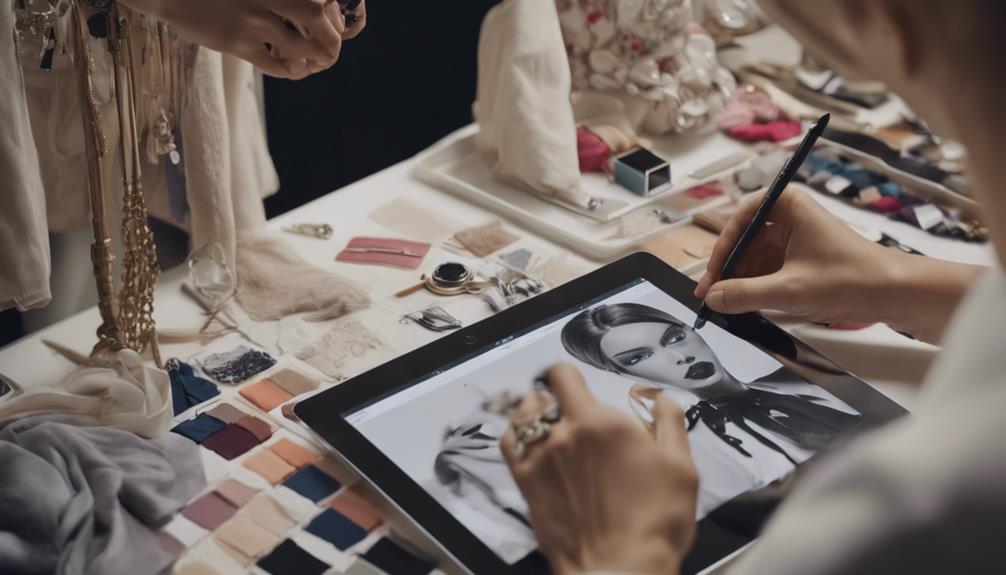
The roles of designers and stylists differ considerably, with designers creating garments while stylists curate outfits that reflect individual personalities.
As a fashion designer, you're responsible for fabric selection, garment construction, and innovative designs that align with current consumer trends. You typically focus on seasonal collections, collaborating with manufacturers to bring your creations to life.
On the other hand, as a fashion stylist, your job involves coordinating and presenting outfits drawn from various designers and collections. You work closely with clients, advertising agencies, and magazines to create cohesive looks tailored for specific occasions.
While both roles require an understanding of fashion trends, your focus as a stylist is on personalization and visual storytelling, rather than the technical execution of garment creation.
Designers often engage in hands-on tasks like sketching and sewing, while stylists excel in organization and presentation.
Both positions are essential in the fashion industry, but they serve distinct purposes. If you're drawn to creating new garments, you might find fulfillment as a designer. Conversely, if you enjoy curating looks and expressing individuality, a career as a fashion stylist could be your calling.
Essential Skills for Each Career

When you explore the essential skills for fashion designers and stylists, you'll notice distinct differences.
Designers need a strong foundation in drawing, sewing, and fabric knowledge, while stylists excel in organization and communication.
Both roles, however, thrive on creativity and an eye for trends, making their skills crucial to the fashion industry.
Designer Skill Requirements
Fashion designers require a blend of artistic talent and technical skills to successfully transform their creative visions into wearable art. As a designer, you'll need strong drawing skills to sketch your ideas, along with proficiency in sewing and pattern-making to bring those concepts to life. An in-depth understanding of fabric properties and construction techniques is vital for creating garments that are both functional and visually appealing.
Creativity and innovation are essential for standing out in the competitive fashion industry. You must develop unique concepts that resonate with your audience. Additionally, having business acumen will help you assess market trends and guarantee your collections are commercially viable.
Familiarity with technology is increasingly important for designers. Knowledge of design software and production processes can streamline your workflow and enhance your design capabilities. While fashion stylists focus on curating looks and trends, your role as a designer encompasses the entire process of creating garments.
Embrace these skills, and you'll be well-equipped to carve out your niche in the fashion world.
Stylist Skill Essentials
Excellent organizational skills are fundamental for a stylist, as you'll need to curate cohesive outfits that reflect your client's personal style for various occasions.
As a stylist, you must understand different body shapes and flattering silhouettes, making sure you enhance your client's appearance and boost their confidence. This knowledge allows you to recommend pieces that complement their unique features.
A keen eye for current and emerging fashion trends is important too. You'll create visually appealing looks that resonate with your target audience while ensuring they stay relevant.
Effective communication skills are essential in your role as well. You'll collaborate with clients and designers, articulating your vision and styling choices clearly during consultations and projects.
Familiarity with color theory and fabric types also plays a significant role in your success as a stylist. Understanding how to combine colors and fabrics helps you make informed decisions about clothing combinations, ensuring that outfits are stylish, harmonious, and practical.
The Intersection of Design and Styling
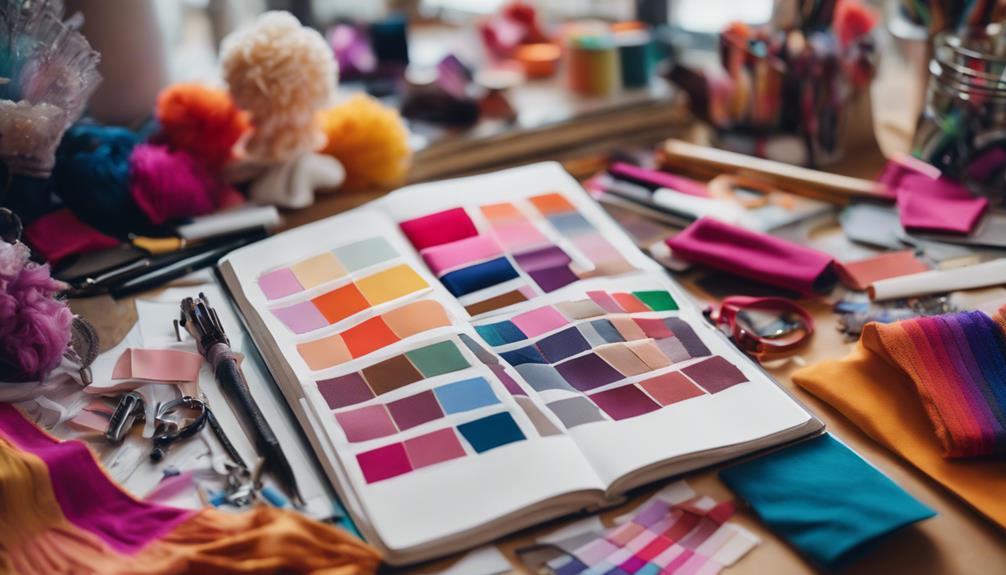
At the heart of the fashion industry lies a dynamic interplay between design and styling, where each discipline enhances the other to create enchanting visual stories. Fashion styling breathes life into the garments crafted by different designers, transforming them into cohesive narratives that captivate audiences. As a stylist, you'll curate collections and select the best suit for each piece, ensuring that every detail—from accessories to makeup—complements the designer's vision.
Effective collaboration between designers and stylists is essential; designers provide the foundational garments, while you add the finishing touches that elevate the overall aesthetics. This partnership allows for innovation, as both parties research current trends and historical influences to create compelling looks that resonate with consumers.
Fashion shows exemplify this synergy, showcasing how design and styling work hand in hand. Designers present their collections, while stylists meticulously plan the entire presentation, ensuring that every element aligns with the intended theme.
Current Trends in Fashion
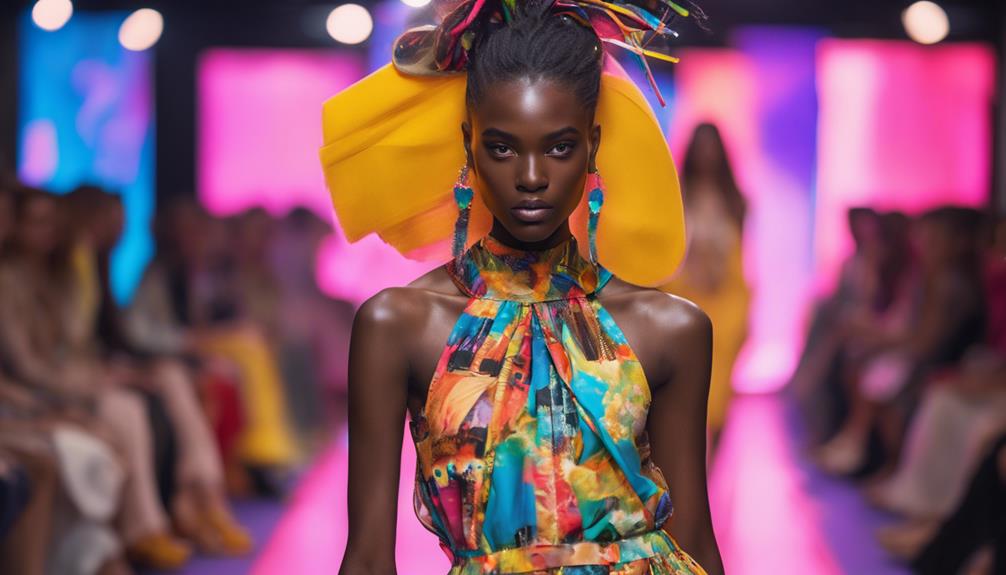
Trends in fashion are evolving rapidly, reflecting a blend of practicality and aesthetics that resonates with today's consumers. You'll notice that utilitarian items, like the Stanley Quencher H2.0 40oz Tumbler, are becoming essential accessories in daily wardrobes. This shift shows how lifestyle products are merging with fashion, catering to your need for both function and style.
Sustainability is at the forefront of current trends, with brands increasingly responsible for creating eco-friendly collections. This movement responds to your demand for responsible fashion, encouraging you to invest in pieces that reflect your values. Additionally, vintage aesthetics are making a strong comeback, as designers pull inspiration from past decades, creating designs that feel both classic and fresh.
Social media plays a pivotal role in shaping these trends. Influencers and brands showcase different collections in real-time, allowing you to discover new styles and ideas instantly. Fashion magazines also highlight these evolving trends, serving as a guide for your personal style journey.
Embracing these contemporary trends not only enhances your wardrobe but also aligns with the values of today's fashion landscape.
Career Paths and Opportunities
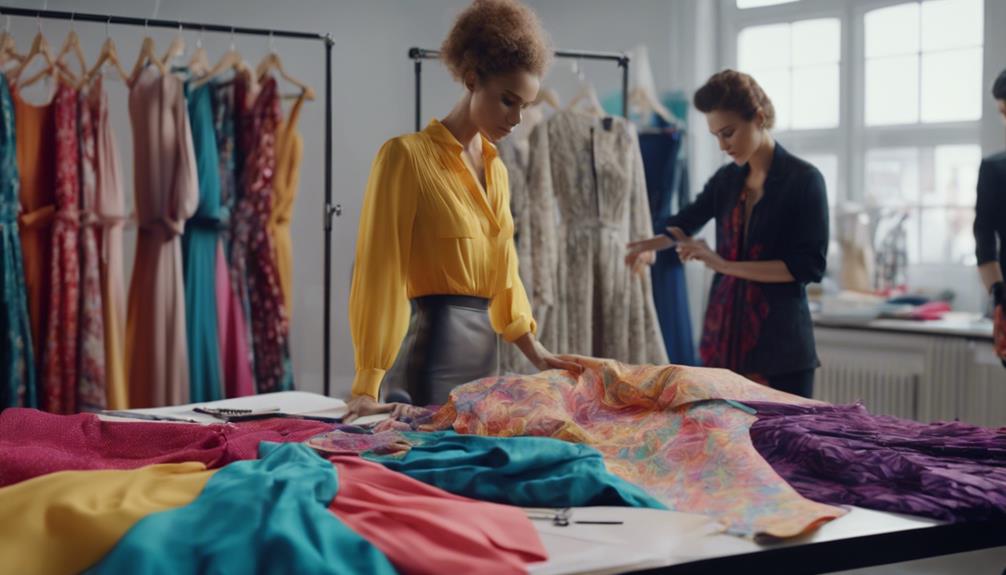
Exploring career paths in fashion reveals diverse opportunities for both aspiring designers and stylists, each offering unique avenues to express creativity and build a personal brand.
As a fashion designer, you can work in various settings like fashion houses, retail brands, or even as an independent creator. This flexibility allows you to shape your vision while contributing to the industry's evolving landscape.
On the other hand, fashion stylists often find roles in magazines, television, or as personal consultants, where you can curate looks that resonate with different audiences. Both career paths allow for freelance opportunities, letting you manage your schedule and take on exciting projects that showcase your talent.
If you're considering either path, specialized fashion courses and degree programs can provide essential skills and connections through internships.
Networking is imperative; attending industry events and collaborating with others can greatly boost your career.
Staying updated on current trends, consumer preferences, and emerging technologies is essential for both fashion designers and stylists to remain competitive in this fast-paced industry.
Choose the path that aligns with your passion and watch your career flourish!
Challenges in the Fashion Industry

Steering through the fashion industry presents numerous challenges, as both designers and stylists must continuously adapt to the relentless pace of change and high expectations for innovation.
First things first, you need to understand that producing a high volume of collections each year can be overwhelming. This pressure forces you to innovate constantly while staying relevant.
Moreover, consumer preferences shift rapidly, which means you'll often have to balance your personal expression with market demands. It's essential to stay in tune with what your audience wants and needs, as this will heavily influence your work.
The styling aspect can be particularly taxing; you must regularly refresh your portfolio to attract clients and maintain their interest.
The fast-paced environment of fashion requires resilience. You'll navigate stress from tight deadlines, all while ensuring your work reflects current trends.
One of the significant hurdles you'll face is maintaining a unique voice amidst the overwhelming influence of trends and market pressures. By acknowledging these challenges, you can better prepare yourself for a successful career in either fashion styling or design.
Frequently Asked Questions
Which Is Better, Fashion Designer or Fashion Stylist?
Deciding whether being a fashion designer or stylist is better depends on your interests. If you love creating garments, design's your path. If curating looks excites you, styling's the way to go. Choose what resonates with you!
What Is the Difference Between Styling and Design?
Did you know that 85% of consumers prefer personalized styling? Styling focuses on curating outfits and visual storytelling, while design emphasizes garment creation and technical execution. Both require a keen eye for trends and consumer preferences.
Can I Be Both Fashion Designer and Stylist?
Yes, you can definitely be both a fashion designer and a stylist. Many professionals successfully blend these roles, enhancing their creativity and versatility in the fashion industry to create cohesive collections and stylish presentations.
How Do You Know if Fashion Design Is Right for You?
You might find fashion design is right for you if you love sketching ideas, experimenting with fabrics, and turning concepts into real garments. If that excites you, it's time to explore your creative potential!
Conclusion
Now that you've explored the worlds of fashion styling and fashion design, it's clear each path offers unique opportunities and challenges.
Whether you're drawn to the canvas of design or the artistry of styling, your passion will light the way.
Remember, fashion is like a vibrant tapestry—each thread plays an essential role.
So, embrace your creativity, immerse yourself in the industry, and find the career that fits you like a perfectly tailored suit!
